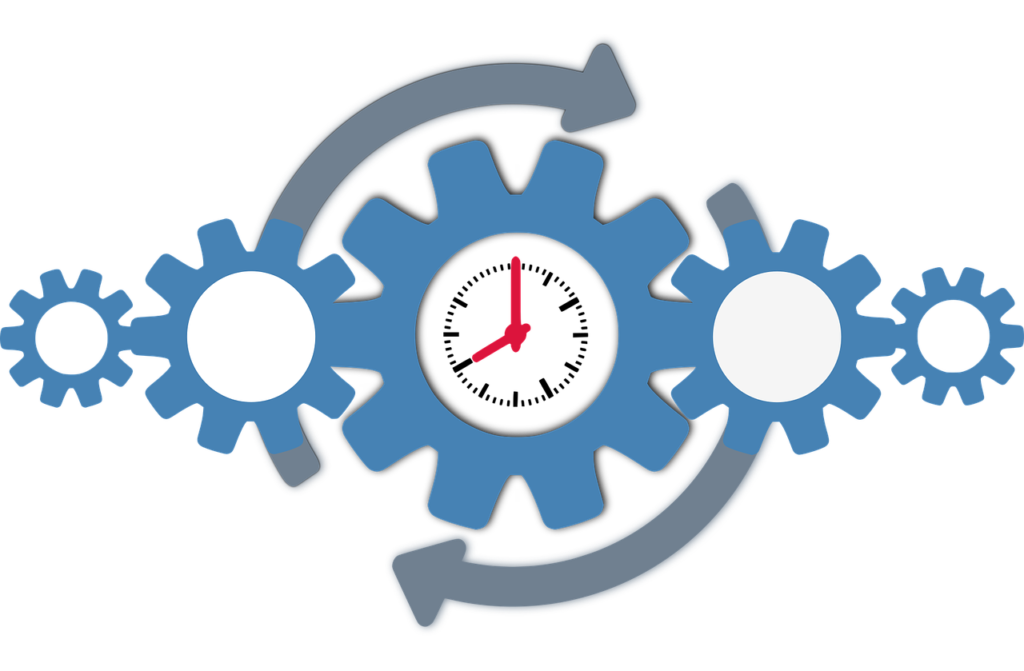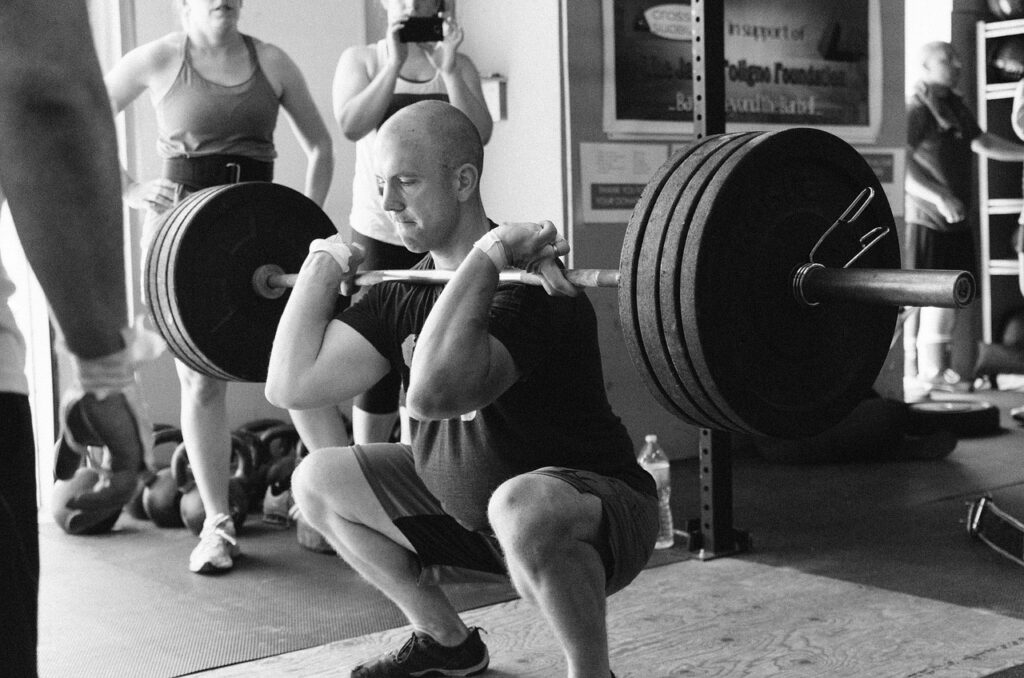An Entire Approach for Weight Loss. Your Complete Guide for Weight Loss

Are you prepared to experience the amazing strength of your own tenacity and dedication?
Get ready for an amazing journey as we reveal the amazing weight reduction handbook which is packed with achievable tactics. Prepare to be astonished by what you can do.
Losing pounds is the biggest goal for most people. Many causes are there which can easily lead to weight gain, and you may get trapped by the weight gain causes. But no need to worry, here you will get a complete guide. Although weight loss is not easy, applying proper guidance in your routine life and daily activities to achieve a weight loss goal is no longer harder.
Here in this article, you will only direct with tips on how to use them and get the best from them.
In this comprehensive guide to weight loss, we will delve into the strategies, tools, and knowledge necessary to achieve and maintain a healthy weight.
From the science behind weight loss to practical tips for incorporating healthy habits into our daily routines, get ready to be amazed by the power you hold to take charge of your body and create lasting change.
We assure you if you apply these tips and ways consistently and seriously in your day-to-day activities you can be able to see astonishing results soon.
GENERAL QUERIES
Is Weight Management Necessary
In a world where fad diets and quick fixes abound, the importance of maintaining a healthy weight often gets overshadowed.
However, the impact of weight on our overall well-being cannot be overstated. Beyond the aesthetic appeal, maintaining a healthy weight is crucial for our physical, mental, and emotional health.
A healthy weight is not just about fitting into a certain dress size or looking good in a swimsuit. It is about nourishing our bodies, reducing the risk of chronic diseases, and enhancing our quality of life. The benefits of maintaining a healthy weight are truly splendid from improved cardiovascular health to increased energy levels and better mental clarity.
Weight management is not merely about shedding pounds; it’s about finding a sustainable balance that supports our long-term well-being. (1)
It is a journey that requires commitment, dedication, and a deep understanding of our bodies.
By embarking on this path, we open ourselves up to a world of amazing possibilities and the potential to transform our lives.
In this comprehensive guide to weight loss, we will delve into the strategies, tools, and knowledge necessary to achieve and maintain a healthy weight.
From the science behind weight loss to practical tips for incorporating healthy habits into our daily routines, get ready to be amazed by the power you hold to take charge of your body and create lasting change.
Let’s Start a Sustainable Weight Loss Journey
Sustainable weight loss is not about quick fixes or crash diets; it’s about making long-lasting changes that will support your health and well-being for years to come.
By establishing a solid foundation, you can navigate the challenges ahead with resilience, stay committed to your goals, and embrace a holistic approach to wellness.
One of the first steps is to cultivate a positive mindset. Believe in yourself and your ability to make meaningful changes. Embrace self-compassion, acknowledging that setbacks may occur but are part of the learning process. Approach your weight loss journey with an empowering perspective, viewing it as an opportunity for personal growth and self-improvement.
Shift your focus from simply losing weight to nurturing your body, mind, and spirit.
Setting realistic and achievable goals is crucial for sustainable weight loss. While feeling enthusiastic and eager to see rapid results is natural, true success lies in gradual and consistent progress.
Break down your ultimate weight loss goal into smaller milestones that can be celebrated along the way. This approach provides motivation and allows you to track your progress and make necessary adjustments as you go.
Finally, surround yourself with support and accountability. Share your goals with friends, family, or a support group that can provide encouragement and help you stay on track. So, fasten your seatbelt, open your mind to new possibilities, and let us embark on this extraordinary journey together—a journey that will empower you to discover the splendid benefits of maintaining a healthy weight.
Simple and the Best Secret of Weight Loss
Calorie Deficit: When it comes to weight loss, one concept stands above all others: the calorie deficit. The principle is simple yet powerful.
To lose weight, you have to burn more calories than you consume. Creating a calorie deficit forces your body to tap into its stored energy reserves, leading to weight loss over time.
Consume Less, Burn More: The human body requires energy to function—energy for breathing, circulating blood, regulating temperature, and performing daily activities.
This energy comes from the calories present in the food we eat. When we consume more calories than our body needs, the excess energy is stored as fat. To achieve a calorie deficit, you have two primary approaches: consuming fewer calories through your diet or increasing your physical activity to burn more calories.
Many people find it beneficial to combine these strategies for optimal results.
Regular Monitoring: Monitoring your calorie intake is crucial.
Start by determining your daily calorie needs based on factors such as age, sex, weight, height, and activity level.
Once you have an estimate of your calorie needs, you can adjust your diet to create a calorie deficit.

A gradual and moderate calorie reduction, typically 500 to 1000 calories per day, is generally recommended for sustainable weight loss of 1-2 pounds per week.
Identify Current Status and Compare with Goal
It’s essential to assess your current status to gain a comprehensive understanding of your body and any factors that may impact your weight.
Two crucial aspects to consider are assessing your Body Mass Index (BMI) and identifying any underlying health conditions or medications that can affect your weight. BMI is a widely used measure that provides an estimate of body fat constructed on height and weight.
Calculating your BMI can help determine whether you fall within a healthy weight range or if you are heavy or obese. Despite the fact BMI is an accommodating screening tool, it’s important to note that it does have limitations, such as not accounting for differences in muscle mass or body composition.
To compute your BMI, divide your weight in kilos by your height in meters squared. On the other hand, you can use online BMI calculators that provide instant results. (2)
The result will fall into one of several categories, including underweight, normal weight, overweight, or obese.
This information can help you gauge where you currently stand in terms of weight and guide your weight loss goals accordingly. You gain valuable insights into your current status by assessing your BMI and identifying any underlying health conditions or medications affecting weight.
This knowledge enables you to approach your weight loss journey with a more informed and tailored perspective.
Factors Encourage Weight Loss
Understanding the factors that influence weight loss can help you establish realistic expectations and set goals that are within your reach.
Individual Aspect: First and foremost, it’s important to recognize that weight loss is a highly individual process.
Factors such as genetics, metabolism, age, sex, and overall health can impact how quickly or slowly you lose weight. It’s essential to focus on your own progress rather than comparing yourself to others, as everyone’s journey is unique.
Set Realistic Goal: Setting realistic goals involves finding the balance between ambition and practicality.
While it’s natural to desire significant weight loss in a short period, it’s important to approach your goals with a long-term mindset.
Aim for steady and sustainable weight loss of 1-2 pounds per week. This gradual approach not only allows your body to adjust but also increases the likelihood of maintaining your weight loss in the future.
Celebrate Milestones: Consider your lifestyle, commitments, and personal circumstances when setting your weight loss goals.
Unrealistic or overly aggressive goals can lead to frustration, discouragement, and potential setbacks. Instead, break your ultimate weight loss goal into smaller milestones that can be achieved over time.
Celebrate each milestone as a testament to your progress and motivation to keep moving forward. By acknowledging individual differences, considering practicality, and focusing on behavior changes, you empower yourself to make steady progress and maintain your achievements in the long run.
Remember, your weight loss journey is unique to you, and with patience, perseverance, and realistic goals, you can achieve the healthy lifestyle you desire.
Essential Requirements for Weight Loss
When it comes to weight loss, nutrition plays a central role in achieving and maintaining your goals.
Creating a balanced and calorie-controlled diet, understanding macronutrients, and practicing portion control are essential components of a successful weight loss journey.
A. Creating a Balanced and Calorie-Controlled Diet:
To create a balanced diet for weight loss, focus on incorporating a variety of nutrient-dense foods into your meals.
Include plenty of fruits, vegetables, whole grains, lean proteins, and healthy fats. These foods provide essential vitamins, minerals, fiber, and other nutrients while helping to keep you satisfied and energized. Calorie control is crucial for weight loss, as it helps create the necessary calorie deficit. Start by determining your daily calorie needs based on factors like age, height, and activity level.
From there, you can adjust your calorie intake to create a modest calorie deficit, typically around 500 to 1000 calories per day for a sustainable weight loss of 1-2 pounds per week.
B. Understanding Macronutrients and Their Role in Weight Loss:
Macronutrients, including carbohydrates, proteins, and fats, are the three main components of our diet that provide energy.
Understanding their roles and finding the right balance is important for weight loss.
Carbohydrates are a primary source of energy and can be found in foods like fruits, vegetables, whole grains, and legumes. Opt for complex carbohydrates that provide fiber and nutrients while avoiding excessive refined sugars and processed grains intake.
Including adequate protein in your diet can help promote satiety and preserve lean muscle mass during weight loss. Fats are an important energy source and aid in the absorption of fat-soluble vitamins.
Choose healthy fats from sources such as nuts, seeds, avocados, olive oil, and fatty fish while minimizing intake of saturated and trans fats.
C. The Importance of Portion Control:
Portion control is crucial for managing calorie intake and preventing overeating. It’s important to always keep in mind the exact and required portion sizes and pay attention to your body’s hunger and fullness signals.
Use measuring cups, food scales, or visual references to ensure appropriate portion sizes for different food groups.
Practicing mindful eating can also help with portion control. Slow down all through the eating process, taste each bite, and pay attention to your body’s signals of filling.
Avoid distractions while eating, such as watching TV or using electronic devices, as they can lead to mindless overeating.
By creating a balanced and calorie-controlled diet, understanding macronutrients, and practicing portion control, you can optimize your nutrition for weight loss.
Remember that sustainable weight loss is a gradual process, and adopting healthy eating habits that you can maintain in the long term is key.
How Nutrition and Hydration Lead to Weight Loss
Incorporate Nutrient-Dense Foods and Avoiding Empty Calories are Important.
When it comes to weight loss, it’s essential to focus on the quality of your food choices.
Nutrient dense foods provide a plethora of vitamins, minerals, and other beneficial compounds while being relatively low in calories.
These include fruits, vegetables, lean proteins, whole grains, and healthy fats.
On the other hand, empty calories refer to foods that are high in calories but offer little to no nutritional value, such as sugary snacks, processed foods, and sugary beverages.
By incorporating more nutrient-dense foods into your diet and minimizing empty calories, you’ll not only support weight loss but also improve overall health and well-being. (3)

Staying properly hydrated is often overlooked but plays a crucial role in weight loss.
Drinking an adequate amount of water helps maintain optimal bodily functions, aids digestion, and promotes satiety.
Sometimes, we may mistake thirst for hunger, leading to unnecessary calorie consumption. By making hydration a priority, you can help curb your appetite, prevent overeating, and support your body’s natural processes. Aim to drink at least 8 cups (64 ounces) of water per day, adjusting for individual needs based on factors like activity level and climate.
Meal planning is an effective strategy for weight loss as it helps you make intentional food choices and avoids impulsive, unhealthy options.
Plan your meals, considering a balance of macronutrients (carbohydrates, proteins, and fats) and portion sizes.
This practice not only allows you to control calorie intake but also ensures that you have nutritious meals readily available, reducing the temptation to reach for convenient, unhealthy alternatives.
Additionally, incorporate healthy snacks into your meal plan to keep hunger at bay and maintain stable blood sugar levels throughout the day.
Opt for snacks that are high in protein and fiber, such as Greek yoghurt, nuts, fruits, or raw vegetables with hummus.
- Hydration And Sleep
Proper hydration is essential for healthy weight reduction and general well-being.
Maintaining proper hydration promotes the body’s natural functions and improves digestion, metabolism, and nutrition absorption.
Hydration is particularly advantageous for weight loss in a number of ways.
First off, drinking water can help you manage your appetite and consume less calories. Feelings of hunger can occasionally be confused with thirst.
Staying hydrated can help you distinguish between hunger and thirst, which will stop you from overeating or unnecessarily snacking. (4)
Additionally, consuming water before meals might increase feelings of fullness, which can result in smaller serving sizes and lower calorie intake.
Recognizing the importance of quality sleep for weight management and hormone regulation is vital in achieving successful weight loss and maintaining overall health.
Sleep plays a crucial role in various physiological processes, including metabolism, appetite regulation, and hormonal balance, all of which impact weight management.
One way in which sleep influences weight management is through its impact on appetite and hunger hormones. Insufficient sleep has been associated with an imbalance in the hormones leptin and ghrelin.
Leptin, produced by fat cells, helps regulate appetite and signals feelings of fullness, while ghrelin, produced by the stomach, stimulates hunger.
When sleep-deprived, levels of leptin decrease, leading to increased hunger, while levels of ghrelin rise, promoting a stronger desire for food and potentially leading to overeating or making poor food choices.
- Tips On Improving Water Intake and Sleep Cycle
Improving Water Intake:
- Carry a Water Bottle: Keep a reusable water bottle with you throughout the day as a visual reminder to drink water regularly.
- Set Reminders: Use phone alarms or reminder apps to prompt yourself to drink water at regular intervals.
- Flavor Infusions: Enhance the taste of water by adding slices of fruits, herbs, or a splash of citrus juice to make it more appealing.
- Drink Before Meals: Make it a habit to drink a glass of water before each meal. Not only does this help with hydration, but it can also contribute to a sense of fullness, preventing overeating.
- Use Apps or Trackers: Utilize smartphone apps or fitness trackers that allow you to monitor and track your water intake throughout the day.
Improving Sleep Cycle:
- Establish a Consistent Routine: Go to bed and wake up at the same time each day, even on weekends, to regulate your body’s internal clock and promote a consistent sleep-wake cycle.
- Create a Sleep-Friendly Environment: Make your bedroom conducive to sleep by ensuring it is dark, quiet, and at a comfortable temperature. Consider using earplugs, eye masks, or white noise machines if needed.
- Limit Screen Time: Avoid electronic devices such as smartphones, tablets, or laptops for at least an hour before bedtime. The blue light emitted by these devices can disrupt your natural sleep-wake cycle.
- Relaxation Techniques: Engage in calming activities before bed, such as reading, taking a warm bath, practicing mindfulness or meditation, or listening to soothing music to promote relaxation.
- Limit Stimulants: Avoid consuming caffeine or nicotine close to bedtime, as they can interfere with falling asleep and disrupt the quality of sleep.
- Regular Exercise: Engage in regular physical activity, but avoid intense workouts too close to bedtime, as they can increase alertness and make it harder to fall asleep. Aim for moderate exercise earlier in the day.
- Create a Bedtime Ritual: Establish a relaxing routine before bed, such as drinking herbal tea, practicing gentle stretching, or journaling, to signal to your body that it’s time to wind down.
GUIDE ON THE ROLE OF EXERCISE
Various Types of Exercise and Their Roles
When it comes to physical activities for weight loss, it’s important to find exercises that you enjoy and can incorporate into your routine consistently.
Here are some effective options:
A. Cardiovascular Exercises: Cardiovascular exercises (5) increase your heart rate and help burn calories. Some effective options include:
- Brisk Walking: Walking is a low-impact exercise that can be easily incorporated into your daily routine.
- Running or Jogging: These high-intensity activities burn a significant number of calories and can be done outdoors or on a treadmill.
- Cycling: Whether it’s outdoor biking or using a stationary bike, cycling is a great cardio exercise that can be adjusted to different intensity levels.
- Swimming: Swimming is a full-body workout that is gentle on the joints and can burn a significant number of calories.
B. High-Intensity Interval Training (HIIT): HIIT workouts involve short bursts of intense exercise followed by brief recovery periods.
They can be done with various exercises like jumping jacks, burpees, or mountain climbers.
- Strength Training: Strength Training helps build lean muscle mass, which increases your metabolic rate and contributes to weight loss. Incorporate the following exercises.
- Weightlifting: Use free weights, weight machines, or resistance bands to perform exercises like squats, lunges, deadlifts, and bench presses.
- Bodyweight Exercises: Exercises such as push-ups, pull-ups, planks, and squats use your body weight as resistance and can be done anywhere without equipment.
- Circuit Training: Combine strength exercises with brief cardio intervals to create a challenging full-body workout.

C. Group Fitness Classes: Joining group fitness classes can add variety and keep you motivated. Classes like Zumba, kickboxing, spinning, or aerobics provide a structured workout and can be a fun way to burn calories.
D. Sports and Recreational Activities: Engaging in sports or recreational activities not only burns calories but also provides an enjoyable way to stay active.
Consider activities such as basketball, tennis, soccer, hiking, or dancing.
E. Interval Training: Incorporate interval training into your workouts by alternating between periods of high-intensity exercise and active recovery.
This approach can maximize calorie burn and improve cardiovascular fitness.
Benefits of Physical Activities
Regular physical activity offers numerous benefits for weight loss. Here are some key benefits to consider:
Increased Calorie Expenditure: Engaging in physical activity burns calories, which can contribute to creating a calorie deficit and promoting weight loss.
The more intense the activity, the more calories you will burn during and even after exercise through an elevated metabolic rate.
Boosts Metabolism: Regular exercise helps increase your metabolic rate, which is the number of calories your body burns at rest.
This means that even when you’re not exercising, your body becomes more efficient at burning calories, supporting weight loss efforts.
Preserves Lean Muscle Mass: When you lose weight, there is a risk of losing both fat and muscle mass. Regular exercise, particularly strength training, helps preserve muscle mass while promoting fat loss.
This is important because muscle burns more calories at rest than fat, contributing to a higher resting metabolic rate.
Enhances Fat Burning: Certain types of exercise, such as high-intensity interval training (HIIT) and resistance training, can stimulate the body’s fat-burning mechanisms.
These exercises increase the utilization of stored fat as an energy source, aiding in weight loss.
Appetite Regulation: Exercise can help regulate appetite hormones, such as ghrelin and leptin, which control hunger and fullness cues.
Regular physical activity can reduce appetite and enhance feelings of satiety, helping to prevent overeating and manage calorie intake.
Improves Insulin Sensitivity: Physical activity improves insulin sensitivity, allowing your body to use glucose more effectively.
This can help regulate blood sugar levels and prevent insulin resistance, which is associated with weight gain and obesity.
Mental and Emotional Well-being: Exercise releases endorphins, which are natural mood-boosting chemicals in the brain. Regular physical activity can reduce stress, anxiety, and symptoms of depression, providing a positive mindset and motivation for weight loss.
Long-term Weight Maintenance: Incorporating regular exercise into your weight loss journey can improve long-term weight maintenance.
By adopting an active lifestyle, you can sustain weight loss, prevent weight regain, and enjoy the ongoing benefits of improved fitness and overall health (6).
Best Exercise Routines
Creating an exercise routine that suits your lifestyle is crucial for ensuring consistency and long-term adherence.
Here are some steps to help you develop a routine that works for you:
Assess Your Schedule and Availability: Look at your daily and weekly schedule to identify time slots that are most suitable for exercise. Consider whether you prefer morning workouts, lunchtime sessions, or evening activities.
Choose a time when you’re most likely to have energy and can commit to regular exercise.
Define Your Goals: Determine what you want to achieve through your exercise routine. Is it weight loss, improved fitness, increased strength, or stress relief?
Having clear goals will help shape your routine and keep you motivated.
Choose Activities You Enjoy: Select activities that you genuinely enjoy and find fulfilling. This increases the likelihood of sticking with your routine.
If you’re not sure which activities you like, experiment with different options until you find what suits you best. Mix and match activities to keep your routine diverse and engaging.
Consider Your Fitness Level: Consider your current fitness level and any physical limitations.
Start with activities and intensities that are appropriate for your abilities, and gradually progress as you become more comfortable and fit.
Set Realistic and Measurable Targets: Establish realistic and measurable targets that align with your goals. For example, commit to a certain number of workouts per week, the duration of each session, or specific milestones to achieve. Having tangible goals helps track progress and provides a sense of accomplishment.
Plan and Schedule Your Workouts: Treat your exercise routine as a non-negotiable appointment with yourself.
Plan your workouts and schedule them into your calendar. Treat them with the same importance as any other commitment in your life. Having a structured plan helps ensure consistency.
Start with Small Steps: If you’re new to exercise or getting back into a routine after a break, start with small, manageable steps.
Begin with shorter workouts or less intense activities, gradually increasing the duration and intensity as you progress. This helps prevent burnout or injury.
Include Variety and Flexibility: Incorporate a variety of activities into your routine to keep it interesting and prevent boredom.
Alternate between cardiovascular exercises, strength training, flexibility work, and recreational activities.
Additionally, be flexible and open to adjusting your routine based on changes in your schedule or preferences.
Prioritize Recovery and Rest Days: Allow time for recovery and rest days within your routine. Your body needs time to repair and adapt to the demands of exercise.
Listen to your body and give it the rest it needs to prevent overtraining and reduce the risk of injuries.
Stay Accountable and Seek Support: Find ways to stay accountable and motivated. This could involve partnering up with a workout buddy, joining fitness communities or classes, tracking your progress, or using fitness apps.
Support and encouragement from others can help you stay committed and enjoy the journey.
Strategies for Staying Motivated and Accountable
Staying motivated and accountable is crucial for maintaining a consistent exercise routine. Here are some strategies to help you stay motivated and accountable:
Set Clear and Specific Goals: Define your fitness goals in a clear and specific manner.
Whether it’s weight loss, increased strength, improved endurance, or training for an event, having well-defined goals gives you something to work towards and helps maintain motivation.
Create a Visual Reminder: Keep your goals visible by creating a visual reminder. This can be a vision board, sticky notes, or a written statement placed somewhere you’ll see it regularly.
Seeing your goals every day serves as a powerful reminder of why you’re working towards them.
Find Your Why: Identify your reasons for wanting to exercise and lead a healthy lifestyle.
It could be to improve your overall well-being, set a positive example for your loved ones, boost your self-confidence, or manage stress.

Understanding your underlying motivations can help you stay committed.
Track Your Progress: Keep track of your exercise sessions, milestones, and achievements. Use a fitness app, a workout journal, or a habit tracker to monitor your progress.
Seeing how far you’ve come can provide a sense of accomplishment and motivation to keep going.
Set Realistic and Achievable Targets: Break your goals down into smaller, realistic targets. Set milestones that are achievable within a reasonable timeframe.
Celebrate each small victory along the way, as this will keep you motivated and reinforce your progress.
Find Enjoyable Activities: Choose exercises and activities that you genuinely enjoy.
When you engage in activities you find fun and fulfilling, you’re more likely to look forward to them and stay motivated.
Try different workouts, classes, or outdoor activities until you find what brings you joy.
Mix Up Your Routine: Avoid monotony by incorporating variety into your exercise routine. Try new workouts, switch up the order of exercises, or explore different fitness classes.
Introducing variety challenges your body, keeps you mentally engaged and prevents boredom.
Schedule Your Workouts: Treat your exercise sessions as non-negotiable appointments and schedule them into your calendar.
Block off dedicated time for your workouts, just as you would for any other important commitment.
Having a structured schedule helps establish a routine and ensures you prioritize your exercise time.
Find a Culpability Companion: Partnering up with a friend, colleague, and any best companion who shares alike aptness goals can provide shared support and accountability.
You can exercise together, share progress updates, and motivate each other during challenging times.
Join a community or Class: Consider joining a fitness community or enrolling in group exercise classes. Being part of a like-minded group can foster a sense of belonging, motivation, and friendly competition. The support and camaraderie within a community can help keep you accountable and motivated.
Reward Yourself: Set up a system of rewards for achieving your goals or attainment of precise milestones.
Pleasure yourself with somewhat you enjoy the most, like acupressure, a new training outfit, or a fun activity. Rewards provide an extra incentive and reinforce positive behavior.
Stay Optimistic and Exercise Self-Compassion: Preserve a positive attitude and exercise self-compassion all over your fitness journey.
Accept that there may be ups and downs, and making mistakes or missing a workout is okay. Be kind to yourself, focus on progress rather than perfection, and celebrate your efforts.
Importance Of Yoga for Weight Loss
Yoga has gained popularity as a holistic practice that offers numerous benefits, including its potential to support weight loss (7).
Here are several points highlighting the importance of yoga for weight loss:
Physical Activity and Calorie Burning:
Yoga involves various postures (asanas) and sequences that engage different muscle groups and promote physical activity. Active forms of yoga, such as Vinyasa or Power Yoga, can help increase heart rate, burn calories, and contribute to a calorie deficit, supporting weight loss efforts.
Regular yoga practice can help build lean muscle mass, increasing metabolic rate and enhancing calorie burning even outside of yoga sessions.
Mindful Eating and Improved Awareness:
Practicing yoga encourages mindfulness and a greater awareness of the body and its sensations, including hunger and fullness cues. By cultivating mindfulness, individuals may become more conscious of their eating habits, making it easier to recognize emotional eating triggers, practice portion control, and make healthier food choices.
Stress Reduction and Emotional Well-being:
Yoga incorporates breathing techniques, meditation, and relaxation, which can help reduce stress, anxiety, and emotional eating.
By managing stress levels, individuals may reduce cortisol, a hormone associated with weight gain, particularly around the abdominal area. Improved emotional well-being through yoga can positively impact overall lifestyle choices, leading to healthier behaviors and sustainable weight loss.
Body Awareness and Acceptance:
Yoga encourages body awareness and self-acceptance, promoting a positive body image and a healthier relationship with one’s own body.
This shift in mindset can support long-term weight management by focusing on overall well-being rather than solely on weight loss goals.
Improved Digestion and Detoxification:
Certain yoga postures, such as twists and inversions, can stimulate the digestive system, improve circulation, and support the body’s natural detoxification processes.
Enhanced digestion and elimination can optimize nutrient absorption, facilitate weight loss, and contribute to overall well-being.
Reduced Inflammation and Hormonal Balance:
Chronic inflammation and hormonal imbalances can contribute to weight gain and hinder weight loss efforts.
Regular yoga practice has been associated with reduced inflammation markers and improved hormonal balance, creating a more favorable environment for weight management.

It’s important to note that while yoga can be a beneficial component of a weight loss journey, it is typically most effective when combined with a well-rounded approach that includes a balanced diet, regular physical activity, and other lifestyle modifications.
Summer-Up Guide for Beginners for Weight Loss
Losing weight can be a challenging but rewarding journey. If you’re a beginner looking to start your weight loss journey, here are some key steps to get you started:
Set Realistic Goals: Start by setting genuine and attainable weight loss goals. Aim for steady and maintainable weight loss, typically 1-2 pounds per week. Remember that healthy weight loss is a long-term process.
Evaluate Your Diet: Assess your current eating habits and identify areas for improvement.
Focus on consuming a balanced diet rich in unabridged, nutrient-dense diets such as fruits, vegetables, lean proteins, and healthy fats. Bound your consumption of processed foods, sugary drinks, and high-fat snacks.
Portion Control: Learn to practice portion control to manage your calorie intake.
Use slighter plates, portion your food, and pay attention to your body’s hunger and fullness cues. Avoid mindless eating and emotional eating by practicing mindful eating techniques.
Stay Hydrated: Drink plenty of water throughout the day.
Water helps keep you hydrated, aids digestion, and can help you feel fuller, reducing the tendency to overeat. Replace sugary beverages with water or unsweetened alternatives.
Incorporate Physical Activity: Engage in regular physical activity to support weight loss.
Start with activities you enjoy, such as walking, cycling, swimming, or dancing. Aim for at least 150 minutes of moderate-intensity exercise per week.
Gradual Progression: Gradually increase the intensity, duration, and variety of your workouts to avoid plateaus and keep challenging your body.
Consider incorporating strength training exercises to build lean muscle mass, which can boost your metabolism.
Prioritize Sleep: Aim for 7-9 hours of quality sleep each night. Sufficient sleep is essential for overall health and weight management. Lack of sleep can disrupt hormones related to appetite regulation and lead to increased food cravings.
Manage Stress: Find healthy ways to manage stress, as it can impact your eating habits and weight loss progress. Practice relaxation techniques such as deep breathing, meditation, yoga, or engaging in hobbies you enjoy.
Track Your Progress: Keep a record of your food intake, exercise routines, and measurements to track your progress. Regularly assess your achievements and make necessary adjustments to stay motivated and on track.
For Half-achievers
Caloric Deficit: To lose weight, you are keenly required to create a caloric deficit by consuming fewer calories than you burn.
This goal can be accomplished over a combination of dietary deviations and increased physical activity.
Balanced Diet: Focus on a balanced diet that includes a variety of nutrient-dense foods. Opt for lean proteins, whole grains, fruits, vegetables, and healthy fats. Limit processed foods, sugary beverages, and excessive intake of refined carbohydrates and unhealthy fats.
Mindful Eating: Practice mindful eating by paying attention to your food choices and eating habits.
Slow down, savour each bite, and listen to your body’s signals of hunger and fullness.
Supportive Environment: Surround yourself with a supportive environment that encourages healthy habits. Seek the support of friends, family, or a support group to stay motivated and accountable.
Consistency and Patience: Remember that weight loss is a gradual process. Be consistent with healthy habits and be patient with yourself. Focus on long-term sustainable changes rather than quick fixes.
While performing all these guidelines anyone can be an expert as time passes by.
Experts know about all the guidelines, and they just have to be focused, have patience, and be consistent towards their desired weight loss goals.
GUIDE ON THE ROLE OF DIET
Importance Of Proper Diet for Weight Loss
It is impossible to exaggerate the role that diet plays in losing weight.
While physical activity and exercise are important for general health and fitness, the biggest direct influence we have on our body weight comes from the food we choose to eat.
By generating a caloric deficit—a situation in which the amount of energy burned exceeds the amount consumed—a well-balanced and thoughtfully designed diet lays the groundwork for long-term weight loss.
We can maximise our chances of losing weight by being aware of how nutrition affects weight loss and making informed food decisions (8).
In addition to assisting with weight reduction, a nutritious diet also increases general well-being and lowers the chance of developing chronic diseases.
While embarking on a weight loss journey, it is essential to set realistic goals and maintain a positive mindset. Rapid or extreme weight loss approaches can be detrimental to health and may result in muscle loss, nutrient deficiencies, and a higher likelihood of regaining weight later on.
Instead, adopting a gradual and sustainable approach to weight loss is recommended, focusing on making long-term lifestyle changes that can be maintained even after reaching the desired weight.
A well-designed weight loss diet takes into account individual needs, preferences, and any underlying health conditions.
Detailed Concept of Calorie Deficit
The concept of a caloric deficit lies at the core of weight loss. It refers to the condition in which the body expends more calories than it consumes, leading to a gradual reduction in body weight.
By creating a caloric deficit, the body is forced to tap into its energy stores, primarily fat, to meet its energy demands. To achieve a caloric deficit, it is important to understand the energy balance equation.
This equation states that weight loss occurs when energy expenditure (calories burned) exceeds energy intake (calories consumed).
Every individual has a unique daily caloric requirement influenced by factors such as basal metabolic rate (BMR), physical activity level, age, gender, and body composition.
Creating a caloric deficit can be approached in two ways: reducing calorie intake through dietary modifications and increasing calorie expenditure through physical activity.
A combination of both approaches often yields the most effective results. It’s important to note that the magnitude of the caloric deficit should be reasonable and sustainable.
Drastic reductions in calorie intake can lead to nutrient deficiencies, muscle loss, metabolic slowdown, and other adverse effects on overall health. A moderate caloric deficit of around 500 to 1,000 calories per day is generally recommended, as it allows for a steady and healthy rate of weight loss.
This can be achieved by reducing portion sizes, choosing lower-calorie alternatives, and limiting the intake of high-calorie, nutrient-poor foods.
Emphasizing whole, unprocessed foods that are rich in nutrients while being mindful of portion control is key to maintaining a balanced diet within the caloric deficit.
Role Of Metabolism with Healthy Rate of Weight
Loss
The role of metabolism in weight loss is significant and often misunderstood. Metabolism refers to the complex set of chemical processes that occur within our bodies to convert food into energy.
It encompasses various factors, including basal metabolic rate (BMR) (9), which is the energy expended at rest, as well as factors like physical activity, digestion, and thermogenesis. Metabolism plays a crucial role in determining how efficiently our bodies burn calories.
Some individuals may have a naturally faster or slower metabolism, which can impact their ability to lose weight. However, it’s important to note that while metabolism can vary from person to person, it is not the sole determining factor in weight loss.
Diet, physical activity, and overall lifestyle choices also significantly contribute to achieving weight loss goals.
A Healthy Rate of Weight Loss
When aiming for weight loss, it is important to maintain a healthy rate of progress.
Rapid and drastic weight loss is often associated with potential health risks and is generally not sustainable. A healthy rate of weight loss is typically considered to be around 1-2 pounds (0.5-1 kg) per week.
This gradual approach allows for a more sustainable lifestyle change, promotes fat loss while preserving muscle mass, and reduces the likelihood of weight regain.
Attempting to lose weight at a faster rate can lead to muscle loss, nutrient deficiencies, a slowed metabolism, and an increased risk of developing disordered eating patterns.
It is important to prioritize long-term success over quick fixes and focus on creating sustainable habits that can be maintained even after reaching the desired weight. It is essential to consider individual factors such as overall health, body composition, and specific weight loss goals when determining a healthy rate of weight loss.
While metabolism influences how efficiently we burn calories, it is not the sole determinant of weight loss.
Adopting a healthy rate of weight loss, around 1-2 pounds per week (10), allows for sustainable progress, helps preserve muscle mass, and reduces the risk of negative health impacts.
By focusing on long-term habits and seeking professional guidance, individuals can achieve their weight loss goals while prioritizing their overall well-being.
How to Assess Current Diet
Assessing your current diet is an essential step in creating an effective weight loss plan. Here are some steps to assess your diet:
Keep a Food Diary: Start by keeping a detailed record of everything you eat and drink for a few days or preferably a week.
Include portion sizes and note the time of consumption. This diary will provide a snapshot of your current eating habits and help identify patterns and areas for improvement.
Evaluate Nutrient Balance: Review your food diary to assess the balance of macronutrients (carbohydrates, proteins, and fats) in your diet.
Are you consuming a balanced amount of each? Pay attention to the quality of the sources as well. Aim for whole, unprocessed foods that provide essential nutrients.
Analyze Caloric Intake: Use a food tracking app or consult a registered dietitian to analyze the caloric content of your diet.
Compare your daily calorie intake to your estimated calorie needs based on your age, gender, weight, and activity level. This will help you understand if you are consuming more calories than you need and where adjustments may be necessary.
Assess Meal Composition: Look at the composition of your meals. Are they well-balanced with a variety of fruits, vegetables, whole grains, lean proteins, and healthy fats?
Are there any nutrient gaps or areas where you could increase the nutritional value of your meals?
Identify Problem Areas: Identify specific areas where your diet may be hindering your weight loss efforts.
This could include excessive intake of sugary beverages, processed snacks, high-fat foods, or oversized portions. Take note of these problem areas for targeted improvement.
Consider Eating Patterns: Reflect on your eating patterns, including meal frequency, snacking habits, emotional eating triggers, and portion sizes.
Do you eat mindfully, paying attention to hunger and fullness cues? Are there any emotional or situational triggers that lead to overeating or unhealthy food choices?
Remember, the goal of assessing your current diet is not to judge or criticize yourself but to gain a better understanding of your eating habits and areas for improvement.
This knowledge will serve as a foundation for making positive changes and developing a tailored weight loss plan that suits your needs and goals.
How to Identify Problem Areas in Diet
Now you are well aware of the efficient diet for weight loss, but still, most people may have little worry or misconception on how to identify the problematic areas in their diets or eating patterns.
Identifying problem areas in your diet is crucial for successful weight loss. Here are some strategies to help you pinpoint areas that may be hindering your progress:

Review Your Food Diary: Go through your food diary and look for patterns or recurring habits that may contribute to weight gain or hinder weight loss.
Pay attention to the types of foods you consume, portion sizes, meal frequency, and any emotional or mindless eating episodes.
Evaluate Portion Sizes: Assess your portion sizes for different food groups. Are you consuming oversized portions, particularly high-calorie foods?
Use measuring cups or a food scale to get a better understanding of appropriate portion sizes and compare them to what you’ve been consuming.
Identify Trigger Foods: Take note of foods that trigger overeating or unhealthy snacking. These may include high-sugar or high-fat foods that you find difficult to resist.
Identifying trigger foods allows you to create strategies to limit or replace them with healthier alternatives.
Assess Beverage Choices: Pay attention to the beverages you consume.
Sugary drinks, including soda, fruit juices, and energy drinks, can contribute a significant amount of calories without providing much nutritional value.
Replace sugary beverages with unsweetened tea or infused water to reduce unnecessary calorie intake.
Evaluate Snacking Habits: Examine your snacking habits. Are you reaching for unhealthy snacks between meals or during late-night cravings?
Identify any patterns of mindless snacking or emotional eating and brainstorm healthier alternatives, such as fresh fruits, vegetables with hummus, or Greek yogurt.
Consider Cooking and Food Preparation Methods: Assess how you cook and prepare your meals. Are you using excessive amounts of oil, butter, or high-calorie sauces?
Look for ways to make healthier substitutions, such as using cooking sprays, steaming or grilling instead of frying, and opting for herbs and spices to add flavor instead of excessive salt or sugar.
Evaluate Dining Out or Takeout Choices: If you frequently eat out or order takeout, evaluate the choices you make. Restaurant meals can be high in calories, unhealthy fats, and added sugars.
Look for healthier options on the menu, request modifications to make dishes healthier, or consider preparing more meals at home.
Assess Mindful Eating Habits: Reflect on your eating behaviors. Do you eat mindfully, paying attention to hunger and fullness cues, or do you engage in distracted eating?
Slow down during meals, savor each bite, and listen to your body’s signals to avoid overeating.
By identifying problem areas in your diet, you can focus on making targeted changes and implementing healthier alternatives.
Gradually addressing these areas will contribute to a more balanced and sustainable approach to weight loss. Remember, small adjustments over time can lead to significant progress.
How to Determine Calorie Needs
Determining your daily calorie needs, calculating a calorie deficit, and balancing macronutrients are essential steps in creating an effective diet for weight loss. Here’s how you can approach these tasks:
Determining Daily Calorie Needs:
A. Basal Metabolic Rate (BMR): Calculate your BMR, which represents the calories your body needs at rest.
You can use online calculators or formulas like the Harris-Benedict equation to estimate your BMR based on factors such as age, gender, weight, and height.
B. Physical Activity Level (PAL): Multiply your BMR by an activity factor that corresponds to your daily activity level.
This factor takes into account the calories burned through exercise and daily activities. Common activity factors range from sedentary (little to no exercise) to highly active (intense exercise or physical labor).
C. Total Daily Energy Expenditure (TDEE): Add your BMR and the calories burned through physical activity to calculate your TDEE, which represents your total daily calorie needs.
Calculating Calorie Deficit:
A. Set a Target Caloric Intake: Determine how many calories you should consume each day to create a calorie deficit. A reasonable approach is to aim for a deficit of 500 to 1,000 calories per day, which can result in a gradual weight loss of about 1-2 pounds per week.
B. Subtract Caloric Deficit: Subtract your desired calorie deficit from your TDEE to find your target daily calorie intake for weight loss.
Ensure that your target intake does not fall below 1,200 calories for women or 1,500 calories for men, as this may risk inadequate nutrient intake and negatively impact your metabolism.
Balancing Macronutrients:
A. Determine Macronutrient Ratios: Consider the distribution of macronutrients (carbohydrates, proteins, and fats) in your diet. While there is no one-size-fits-all ratio, a balanced approach is generally recommended.
A common guideline is to aim for approximately 45-65% of calories from carbohydrates, 10-35% from proteins, and 20-35% from fats.
B. Calculate Macronutrient Calories: Convert the macronutrient percentages into calorie values by multiplying them by your target daily calorie intake.
For example, if your target intake is 1,500 calories and you aim for 50% carbohydrates, you would calculate 1,500 x 0.5 = 750 calories from carbohydrates.
C. Convert Calories to Grams: Convert the calorie values of each macronutrient into grams using their respective calorie-per-gram values.
Carbohydrates and proteins contain approximately 4 calories per gram, while fats contain about 9 calories per gram. Divide the calorie values of each macronutrient by the respective calorie-per-gram value to find the recommended grams for each (11).
These calculations provide a starting point, and individual variations and preferences may require adjustments.
It is also important to prioritize the quality of macronutrients, focusing on whole, nutrient-dense foods and limiting processed and sugary items.
How to Build a Balanced Diet
Building a balanced diet is crucial for weight loss and overall health. Here’s how you can approach it:
A. Whole, unprocessed foods:
- Focus on consuming whole, unprocessed foods as the foundation of your diet. These include fruits, vegetables, whole grains, legumes, nuts, and seeds.
- These foods are rich in vitamins, minerals, fiber, and other beneficial compounds, while typically being lower in calorie density compared to processed foods.
B. Incorporating fruits and vegetables:
- Aim to include a variety of colorful fruits and vegetables in your meals and snacks.
- Fruits and vegetables provide essential nutrients, fiber, and antioxidants while being low in calories.
- Fill half of your plate with non-starchy vegetables and incorporate fruits as snacks or as part of meals.
C. Choosing lean proteins:
- Include lean sources of protein in your diet, such as skinless poultry, fish, lean cuts of meat, legumes, tofu, tempeh, and low-fat dairy or plant-based alternatives.
- Protein helps promote satiety, supports muscle maintenance and repair, and contributes to a balanced diet.
D. Including healthy fats:
- Include sources of healthy fats, such as avocados, nuts, seeds, olive oil, and fatty fish like salmon.
- Healthy fats provide essential fatty acids, support brain function, help absorb fat-soluble vitamins, and contribute to overall satisfaction with meals.
E. Selecting complex carbohydrates:
- Choose complex carbohydrates, such as whole grains (e.g., quinoa, brown rice, whole wheat bread), legumes, and starchy vegetables (e.g., sweet potatoes, butternut squash).
- Complex carbohydrates provide sustained energy, fiber, and a range of nutrients compared to refined grains and simple sugars.
To build a balanced diet, focus on creating meals that incorporate a variety of these food groups. Consider portion sizes and practice mindful eating to ensure that you are meeting your nutrient needs without overeating. Remember to hydrate adequately with water and limit the consumption of sugary drinks and processed snacks.
GUIDE FOR QUERIES ABOUT TIMING
What is the Best Time for Having Meals
The timing of meals plays a significant role in overall health and weight management.
Our bodies follow a natural circadian rhythm, a 24-hour internal clock that regulates various physiological processes, including digestion (12).
Understanding this rhythm can help optimize nutrient absorption, energy levels, and metabolic function.
During the day, our metabolism is generally more active, and our bodies are primed for efficient digestion and nutrient utilization.
Breakfast, which literally means “breaking the fast,” jumpstarts our metabolism after a night of sleep and provides the necessary energy to kick-start the day.
By consuming a balanced breakfast within a couple of hours of waking up, we provide our bodies with fuel, nutrients, and energy to support physical and mental activities.
As the day progresses, our digestion and metabolism naturally slow down. Lunch, ideally eaten around midday, allows us to refuel and sustain energy levels throughout the afternoon.
This meal should consist of nutrient-dense foods, such as vegetables, lean proteins, and whole grains, providing a steady release of nutrients to support optimal physical and mental function. In the evening, as our bodies prepare for rest and repair, our digestion tends to slow down.
Therefore, having dinner a few hours before bedtime allows for proper digestion without discomfort or disruption to sleep.
A lighter, well-balanced dinner helps avoid excessive caloric intake before periods of lower activity, aiding weight management and promoting restful sleep.
Breakfast Timing: Aim to have breakfast within 1-2 hours of waking up.
- Include a balance of carbohydrates, proteins, and healthy fats
- Choose whole foods like fruits, whole grains, eggs, or Greek yoghurt
- Consider fiber-rich options to promote satiety and digestive health
- Avoid sugary cereals, pastries, or processed breakfast foods
- Limit or avoid high-fat or greasy options that may cause discomfort
Mid-Morning Snack Timing: Have a mid-morning snack approximately 2-3 hours after breakfast.
- Opt for nutrient-dense snacks like nuts, seeds, or fresh fruits
- Include a source of protein to keep you feeling satisfied
- Avoid sugary snacks or processed foods that provide empty calories
Lunch Timing: Aim to have lunch around midday, approximately 4-5 hours after breakfast.
- Incorporate a variety of vegetables, lean proteins, and whole grains
- Choose homemade meals or healthy restaurant options with minimal added fats and sugars
- Practice portion control to avoid overeating
- Avoid heavy, calorie-dense meals that may lead to sluggishness or post-meal fatigue
- Minimize consumption of refined carbohydrates and unhealthy fats
Afternoon Snack Timing: Have an afternoon snack around 2-3 hours after lunch.
- Select snacks that provide sustained energy, such as a handful of almonds, Greek yoghurt, or veggies with hummus
- Consider incorporating a source of protein or healthy fats
- Avoid sugary snacks or processed foods that may cause energy crashes later on
Dinner Timing: Aim to have dinner 2-3 hours before bedtime to allow for proper digestion.

- Focus on a well-balanced meal with lean proteins, vegetables, and whole grains
- Keep portion sizes moderate and avoid late-night heavy meals
- Opt for lighter cooking methods such as grilling, baking, or steaming
- Avoid high-calorie, high-fat, or spicy foods that may disrupt sleep or cause discomfort
- Minimize consumption of alcohol, as it can interfere with sleep quality
Evening Snack Timing: Have a light evening snack if needed, at least an hour before bedtime.
- Choose low-calorie, nutrient-dense options like a small piece of fruit, a handful of berries, or a cup of herbal tea
- Focus on promoting relaxation and satisfying any cravings with healthier choices
- Avoid heavy or large meals that may interfere with sleep or lead to digestive issues
General Dos and Don’ts
Do:
- Listen to your body’s hunger and fullness cues
- Stay hydrated throughout the day
- Practice mindful eating, savouring each bite and eating slowly
- Pay attention to portion sizes and avoid oversized servings
Don’t:
- Don’t skip meals, especially breakfast, as it can lead to overeating later in the day
- Avoid late-night snacking or large meals close to bedtime
- Don’t rely on processed or unhealthy convenience foods regularly
These are some general dos and don’ts that anybody should know during their weight loss journey.
GUIDE ON HOW TO OVERCOME
CHALLENGES
Overcoming plateaus and challenges is an inevitable part of any weight loss journey. Plateaus refer to periods where weight loss stalls despite consistent efforts (13). These plateaus can be frustrating, but understanding and implementing strategies to overcome them can help you stay on track and achieve your weight loss goals.
Here are several approaches to address plateaus and other challenges during your weight loss journey:
A. Understanding Weight Loss Plateaus:
Weight loss plateaus occur when the body adapts to the changes you’ve made, leading to a temporary pause in weight loss.
Understanding that plateaus are a normal part of the process can help you stay motivated and avoid getting discouraged.
It’s essential to remember that weight loss is not always linear, and our bodies have mechanisms to adjust to changes in calorie intake and physical activity.
Plateaus can last for weeks or even months, but with patience and persistence, progress can resume.
B. Adjusting Calorie Intake or Exercise Routine:
When faced with a weight loss plateau, it may be necessary to reassess your calorie intake and exercise routine:
Calorie Intake: Examine your current calorie intake and consider reducing it slightly. A small reduction of 100-200 calories per day can help create a calorie deficit and kickstart weight loss again.
However, it’s important not to excessively restrict calories, as it can lead to nutrient deficiencies and negatively impact your metabolism.
Exercise Routine: If you’ve been following the same exercise routine for a while, your body may have adapted to it.
Consider incorporating new exercises, increasing intensity, or changing workout formats to challenge your body and stimulate further progress.
Strength training, high-intensity interval training (HIIT), or trying a new fitness class can help break through plateaus.
C. Seeking Support from Others:
During challenging times, seeking support from others can provide encouragement, accountability, and new perspectives. Here are a few ways to seek support:
Join a Weight Loss Community: Engage in online forums, social media groups, or local support groups focused on weight loss. Connect with individuals who are going through similar experiences and share advice, tips, and success stories.
Accountability Partners: Find a friend or family member who shares similar health goals and partner up to support each other’s weight loss journeys.
Regular check-ins shared meal plans, or workout sessions can help maintain motivation and provide a sense of accountability. They can provide personalized guidance, reassess your approach, and help you navigate plateaus effectively.
D. Staying Motivated during Challenging Times:
Weight loss journeys can be challenging, but maintaining motivation is key to overcoming obstacles. Here are strategies to stay motivated:
Set Non-Scale Goals: Focus on goals beyond the number on the scale, such as improved fitness levels, increased energy, better sleep, or clothing size changes. Celebrate these milestones as indications of progress and success.
Track Progress: Use a journal, app, or progress photos to track your journey. Reflecting on how far you’ve come can boost motivation and remind you of your positive changes.
Revisit Your Why: Remind yourself of the reasons why you embarked on this weight loss journey in the first place. Revisit your motivations during challenging times to reignite your commitment.
Practice Self-Care: Prioritize self-care activities that help reduce stress and enhance emotional well-being. Engage in activities you enjoy, such as hobbies, meditation, journaling, or spending time with loved ones. Taking care of your overall well-being can positively impact your motivation and resilience.
In conclusion, plateaus and challenges are common during weight loss journeys.
By understanding weight loss plateaus, adjusting your calorie intake or exercise routine, seeking support from others, and staying motivated, you can navigate through these hurdles and continue progressing towards your weight loss goals.
Remember to embrace the journey, focus on overall well-being, and celebrate every achievement along the way.
GUIDE ON EMOTIONAL EATING AND
STRESS MANAGEMENT
Emotional eating, the tendency to turn to food for comfort or as a coping mechanism during times of stress, can be a significant obstacle to weight loss and overall well-being.
This guide will provide you with strategies and techniques to help you overcome emotional eating and manage stress effectively.
Understanding Emotional Eating:
Emotional eating is often driven by a desire to soothe negative emotions, such as stress, anxiety, sadness, or boredom.
It’s important to recognize the triggers and patterns that contribute to emotional eating to address them effectively.
Mindful Awareness:
Develop mindfulness around your eating habits by paying attention to your emotions and physical sensations when reaching for food.
Pause and ask yourself if you are truly hungry or if there is an emotional need driving your desire to eat.
Identify Emotional Triggers:
Take note of situations, events, or emotions that often lead to emotional eating episodes.
Common triggers include relationship conflicts, work stress, fatigue, loneliness, or feelings of inadequacy. Identifying these triggers can help you develop alternative coping mechanisms.
Find Alternative Coping Mechanisms:
Instead of turning to food, discover healthier ways to manage emotions and reduce stress:
Engage in physical activity: Exercise can boost mood, reduce stress, and distract you from emotional triggers.
Practice relaxation techniques: Deep breathing exercises, meditation, or yoga can help calm the mind and alleviate stress.
Seek support: Connect with friends, family, or support groups to share your feelings and receive emotional support.
Engage in hobbies: Pursue activities you enjoy, such as reading, painting, gardening, or listening to music, to shift your focus away from food.
Create an Emotional Eating Toolbox:
Compile a list of strategies and activities that bring you joy, relaxation, or comfort, and keep it easily accessible. Refer to this toolbox when you experience emotional triggers, so you have a variety of healthy alternatives to choose from.
Build a Support Network:
Share your weight loss and emotional eating journey with supportive individuals who can provide encouragement and accountability.
Seek the guidance of a therapist, counsellor, or registered dietitian who specializes in emotional eating and stress management.
Practice Self-Compassion:
Be kind and understanding towards yourself when facing emotional eating challenges. Accept that setbacks may occur, and treat them as learning opportunities rather than reasons to give up.
Practice self-compassion and forgive yourself, focusing on making positive choices moving forward.
Develop Healthy Eating Habits:
Establish a balanced and nourishing approach to eating that supports both physical and emotional well-being:
Eat regular meals: Follow a consistent meal pattern to maintain stable blood sugar levels and avoid extreme hunger or deprivation.
Include a variety of nutrients: Opt for whole, nutrient-dense foods that provide essential vitamins, minerals, and fiber to support overall health.
Practice portion control: Be mindful of portion sizes and listen to your body’s signals of hunger and fullness.
Prioritize Stress Management:
Effective stress management techniques can help prevent emotional eating:
Practice time management: Prioritize tasks, delegate when possible, and establish boundaries to reduce overwhelm.
Engage in stress-reducing activities: Regular exercise, meditation, deep breathing, or engaging in hobbies can help manage stress levels.
Improve sleep quality: Establish a consistent sleep routine, create a calming bedtime routine, and ensure sufficient sleep duration.
Set realistic expectations: Avoid perfectionism and set achievable goals to reduce unnecessary stress.
Practice Progress, Not Perfection:
Remember that overcoming emotional eating and managing stress is a journey. Be patient with yourself and celebrate small victories along the way. Focus on progress rather than perfection, as each step forward brings you closer to your goals.
Overcoming emotional eating and effectively managing stress is essential for successful weight loss and overall well-being.
By understanding the triggers, developing alternative coping mechanisms, building a support network, and prioritizing self-care, you can break free from emotional eating patterns.
Remember to approach the journey with self-compassion and patience, celebrating each step towards a healthier, balanced relationship with food and emotions.
GUIDE FOR MEN AND WOMEN
MEN: –
In this comprehensive weight loss guide tailored specifically for men, we will cover various aspects crucial for achieving and maintaining a healthy weight.
We will address key elements such as nutrition, exercise, mindset, and lifestyle factors.
By focusing on a balanced and sustainable approach, men can develop effective strategies to support their weight loss goals.
We will delve into topics such as creating a calorie deficit through mindful eating, incorporating strength training and cardiovascular exercises to boost metabolism and muscle mass, managing stress and emotional eating, optimizing sleep for hormone regulation, and seeking support through accountability and professional guidance.
With this guide, men can gain the knowledge and tools needed to embark on a successful weight loss journey and embrace a healthier lifestyle for long-term weight management.
Tips For Men
- Focus on Strength Training: Incorporate regular strength training exercises into your fitness routine. Building muscle mass can increase metabolism and aid in weight loss.
- Increase Protein Intake: Include lean sources of protein in your meals, such as poultry, fish, eggs, and legumes. Protein helps preserve muscle mass and promotes satiety.
- Prioritize High-Intensity Interval Training (HIIT): Engage in high-intensity interval workouts that combine bursts of intense exercise with periods of rest. This type of exercise can boost metabolism and burn calories more efficiently.
- Be Mindful of Calorie Intake: Pay attention to portion sizes and be mindful of calorie-dense foods. Focus on nutrient-dense choices to meet your nutritional needs while maintaining a calorie deficit for weight loss.
- Reduce Alcohol Consumption: Alcoholic beverages are often high in calories and can hinder weight loss progress. Limit your alcohol intake or choose lower-calorie options when consuming alcoholic beverages.
- Stay Consistent and Track Progress: Monitor your food intake and exercise routine to stay accountable and track your progress. Consistency is key for sustainable weight loss.
WOMEN: –
The weight loss journey for women is unique and multifaceted, encompassing various factors that contribute to overall success.
To embark on a successful weight loss journey, women should focus on creating a calorie deficit through a balanced and nutritious diet that includes plenty of fruits, vegetables, lean proteins, whole grains, and healthy fats.
Incorporating regular physical activity, including both cardiovascular exercises and strength training, is essential for building lean muscle and boosting metabolism. Women should also prioritize self-care, managing stress levels, and getting enough quality sleep to support hormonal balance and optimal weight loss (14).
Additionally, maintaining a strong support system and embracing a positive mindset that emphasizes progress rather than perfection is crucial for long-term success.
Remember, every woman’s weight loss journey is unique, and it’s important to listen to your body, stay consistent, and be patient with yourself throughout the process.

Tips For Women
- Include Strength Training: Incorporate strength training exercises into your workout routine. Building muscle helps boost metabolism, enhance body composition, and support weight loss goals.
- Prioritize Nutrient-Dense Foods: Opt for whole foods, including fruits, vegetables, whole grains, lean proteins, and healthy fats. These choices provide essential nutrients and help you feel satisfied.
- Engage in Regular Cardiovascular Exercise: Include moderate-intensity cardiovascular exercises, such as jogging, swimming, or cycling, to burn calories and improve cardiovascular health.
- Practice Mindful Eating: Pay attention to your body’s hunger and fullness cues. Avoid emotional eating and focus on nourishing your body with balanced meals and snacks.
- Manage Stress Levels: Implement stress-management techniques, such as meditation, deep breathing exercises, or engaging in hobbies, to reduce stress. Elevated stress levels can impact weight loss efforts.
- Prioritize Sleep: Get sufficient quality sleep to support hormonal balance and overall well-being. Aim for 7-9 hours of sleep per night to optimize weight loss efforts.
- Seek Support: Build a support system of friends, family, or a weight loss community to provide encouragement, accountability, and share experiences.
- Practice Self-Care: Take care of your mental and emotional well-being. Engage in activities that bring you joy, and relaxation, and reduce stress, such as spending time with loved ones, practicing self-care rituals, or pursuing hobbies.
GUIDE ON SUPPLEMENTS FOR WEIGHT LOSS
Do Supplements Always Assist in Weight Loss
When considering supplements for weight loss, it’s important to remember that they should not replace a healthy diet and lifestyle.
Supplements can potentially support your weight loss efforts, but they are not a magic solution on their own.
Here are some supplements that have been studied for their potential effects on weight loss:
Caffeine: Caffeine is a stimulant that can boost metabolism and increase fat burning. It may also help suppress appetite. However, it’s essential to consume caffeine in moderation and be mindful of its potential side effects like jitteriness, sleep disturbances, or increased heart rate.
Green Tea Extract: Green tea extract contains a compound called catechins, which have been linked to increased fat oxidation and weight loss. Green tea extract is also a source of caffeine, but it can be consumed in supplement form without the side effects associated with high caffeine intake.
Garcinia Cambogia: Garcinia cambogia is a tropical fruit extract that contains hydroxy citric acid (HCA). Some studies suggest that HCA may help suppress appetite and inhibit fat storage. However, the evidence is mixed, and more research is needed to confirm its effectiveness.
Conjugated Linoleic Acid (CLA): CLA is a sort of fatty acid initiated in meat and dairy foodstuffs. It has been made known to potentially reduce body fat and increase lean body mass. However, the effects may be modest, and it’s important to choose a reputable brand when considering CLA supplements.
Glucomannan: The konjac plant is the main producer of glucomannan which is a natural dietary fiber. It absorbs water in the digestive tract, promoting a feeling of fullness and potentially reducing calorie intake. Consuming glucomannan with sufficient water is important to prevent choking or blockages in the throat or intestine.
Probiotics: Probiotics are beneficial bacteria that can support gut health. Some studies suggest that certain strains of probiotics may aid in weight loss, though more research is needed to determine the specific strains and mechanisms involved.
Dos And Don’ts of Supplements
Here are some dos and don’ts to keep in mind when it comes to using supplements:
Dos:
Do Research and Choose Reputable Brands: When selecting supplements, do your research and choose reputable brands that have undergone third-party testing for quality and purity.
Look for certifications or seals of approval from organizations such as the U.S. Pharmacopeia (USP), NSF International, or ConsumerLab.
Do Follow Recommended Dosages: Always follow the recommended dosages provided on the supplement packaging or as advised by a professional.
Taking more than the recommended dose does not necessarily lead to better results and may increase the risk of side effects or adverse reactions.
Do Combine Supplements with a Healthy Lifestyle: Supplements should complement a healthy diet and lifestyle, not replace them.
Focus on consuming a balanced diet, engaging in regular physical activity, and practicing other healthy habits such as adequate sleep and stress management.
Do Monitor Your Body’s Response: Pay attention to how your body responds to supplements. Keep track of any changes in your health, mood, or overall well-being.
If you experience any adverse effects or unexpected symptoms, discontinue use.
Don’ts:
Don’t Rely Solely on Supplements: Supplements should not be seen as a substitute for a healthy diet or lifestyle. They are meant to supplement, not replace, a well-rounded approach to overall health.
Prioritize whole, nutrient-dense foods and physical activity as the foundation of your wellness routine.
Don’t Exceed Recommended Dosages: Taking more than the recommended dose of a supplement does not lead to better results.
It can increase the risk of adverse effects or toxicity. Follow the recommended dosages provided by the manufacturer.
Don’t Assume All Supplements Are Safe: While many supplements are generally safe when used as directed, it’s essential to remember that not all supplements are regulated or thoroughly tested for safety and efficacy.
Be cautious and choose reputable brands that undergo third-party testing for quality.
Don’t Neglect Overall Nutritional Needs: Supplements should not replace a balanced diet. They are meant to fill in nutritional gaps or support specific health goals.
Focus on consuming a variety of nutrient-dense foods to ensure you’re getting a wide range of essential nutrients.
Don’t Ignore Potential Interactions or Side Effects: Be aware of potential interactions between supplements and medications you may be taking.
Certain supplements can interfere with the effectiveness or safety of medications. Additionally, pay attention to any side effects or adverse reactions and seek medical advice if needed.
Remember, it’s crucial to approach supplements with caution and prioritize a well-rounded, balanced approach to overall health and wellness.
Best Timings for Taking Different Supplements and
When to Avoid Them
I. Morning:
Multivitamins and Minerals: Take with breakfast or shortly after waking up to support nutrient absorption and provide a foundation of essential vitamins and minerals for the day.
Vitamin D: Take it with breakfast or a meal that contains healthy fats to enhance absorption.
Probiotics: Take on an empty stomach, preferably 15-30 minutes before breakfast or with a light snack. This allows the beneficial bacteria to reach the gut without interference from food.
Omega-3 Fatty Acids: Take with breakfast or a meal that contains healthy fats to improve absorption. Splitting the dosage between morning and evening can also be beneficial.
II. Midday:
B Vitamins: Take with a meal to minimize the potential for stomach upset. B vitamins are often included in energy-boosting or stress-reducing formulas, making them suitable for daytime consumption.
Vitamin C: Take with a meal or a snack to enhance absorption and help support immune function throughout the day.
Antioxidants: Take with a meal that contains healthy fats for better absorption. This includes supplements like vitamin E, CoQ10, or resveratrol.
III. Evening:
Magnesium: Take with dinner or before bed to promote relaxation and support sleep quality.
Calcium: Take it with dinner or before bed. Calcium supplements can interfere with the absorption of certain medications, so it’s best to separate them by a few hours.
Timing to Avoid:
Stimulants: Supplements that contain stimulants like caffeine or thermogenic compounds should generally be avoided in the evening to prevent interference with sleep. Take them earlier in the day or as recommended by the product instructions.
Fat-Soluble Vitamins: Avoid taking fat-soluble vitamins (such as vitamins A, D, E, and K) on an empty stomach, as they require dietary fats for optimal absorption.
Iron and Zinc: Avoid taking iron and zinc supplements with calcium-rich foods or beverages, as calcium can inhibit their absorption. It’s generally best to take them separately.
Fiber Supplements: Take fiber supplements at least a couple of hours away from other medications or supplements, as they can interfere with their absorption.
WRAP-UP
In conclusion, the journey to overcoming emotional eating and effectively managing stress is an ongoing process that requires self-awareness, self-compassion, and a commitment to making positive changes.
By understanding the triggers, developing alternative coping mechanisms, and building a support network, you can break free from the cycle of emotional eating and cultivate healthier habits.
Embarking on a journey to overcome emotional eating and manage stress can be challenging, but remember that you are not alone. It is normal to face obstacles along the way, and setbacks are a natural part of the process.
Embrace a mindset of self-compassion, patience, and resilience as you navigate this journey. Remember that everyone’s journey is unique, and progress may vary. Focus on your individual growth, celebrate every small step forward, and use setbacks as opportunities for learning and growth.
Keep in mind that change takes time, and it is essential to be gentle with yourself throughout the process.
Stay committed to self-care, prioritize your well-being, and trust in your ability to overcome challenges.
Believe in your capacity to make positive changes and create a healthier relationship with food and emotions.You have the power to break free from emotional eating and cultivate effective stress management strategies.
Trust in yourself, stay resilient, and embrace the journey towards a healthier, balanced, and more fulfilling life.



